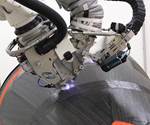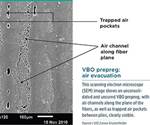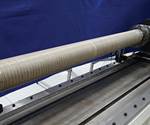OOA overview: Market & opportunities
CW looks at where aero-OEMs and their suppliers are finding out-of-autoclave alternatives.
Although out-of-autoclave (OOA) processing in aerospace applications has been employed for decades in the manufacture of thermoset composite parts for unmanned spacecraft and, more recently, in the manufacture of substructures for commercial passenger aircraft, the autoclave remains the curing technology of choice for the world’s large aircraft OEMs, primarily because of its brute strength — its ability to definitively consolidate composite parts and remove the voids that can compromise structural performance. Such robust consolidation, however — <1% void content — comes at a high price in terms of capital expense, operational costs and time. As composites move further into aircraft, it’s clear the autoclave cannot be the only process available to aerocomposites fabricators. Today, OOA alternatives include vacuum bag-only (VBO) prepregs, dry fiber placement, infusion processes (which rely on oven cure), resin transfer molding (RTM) and thermoplastic composites.
From a technical viewpoint the question is simple: Can OOA options be matured sufficiently to yield parts with <1% void content? The answer, based in part on the reports in this supplement, is yes, but there is a larger question: Can OOA processes match this parameter and demonstrate enough overall savings in capital expense and time to justify the process development/recertification efforts that a move to OOA will require?
We may have that answer sooner than later. As the stories in this OOA Supplement demonstrate, the activity level in OOA process development is substantial, involving structures on flying aircraft. And the composites professionals involved with each, as you’ll find, are strongly invested in making OOA not only feasible, but successful.
Related Content
-
Plataine unveils AI-based autoclave scheduling optimization tool
The Autoclave Scheduler is designed to increase autoclave throughput, save operational costs and energy, and contribute to sustainable composite manufacturing.
-
Composites manufacturing for general aviation aircraft
General aviation, certified and experimental, has increasingly embraced composites over the decades, a path further driven by leveraged innovation in materials and processes and the evolving AAM market.
-
Industrial composite autoclaves feature advanced control, turnkey options
CAMX 2024: Designed and built with safety and durability in mind, Akarmark delivers complete curing autoclave systems for a variety of applications.













